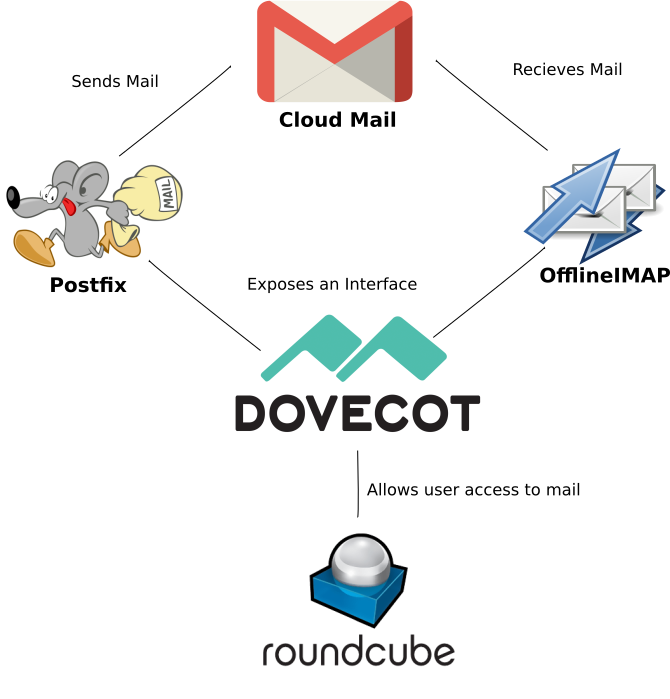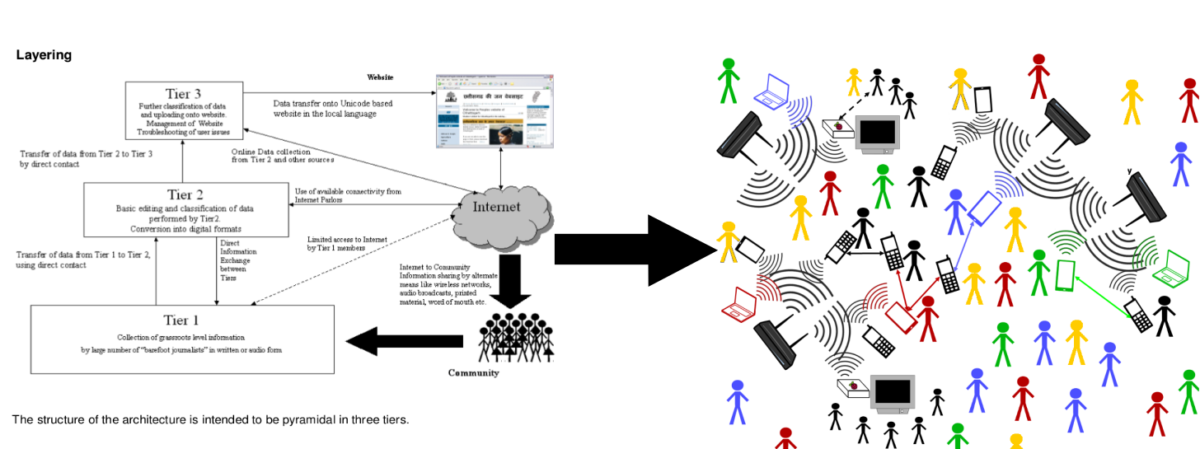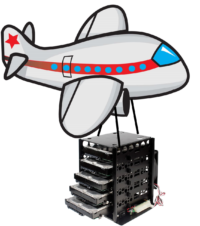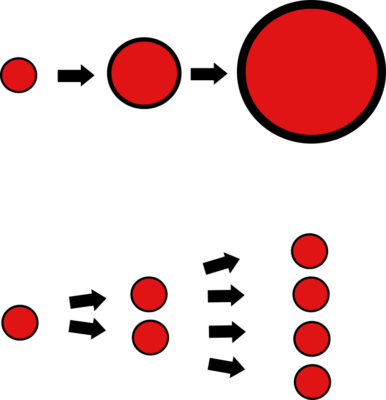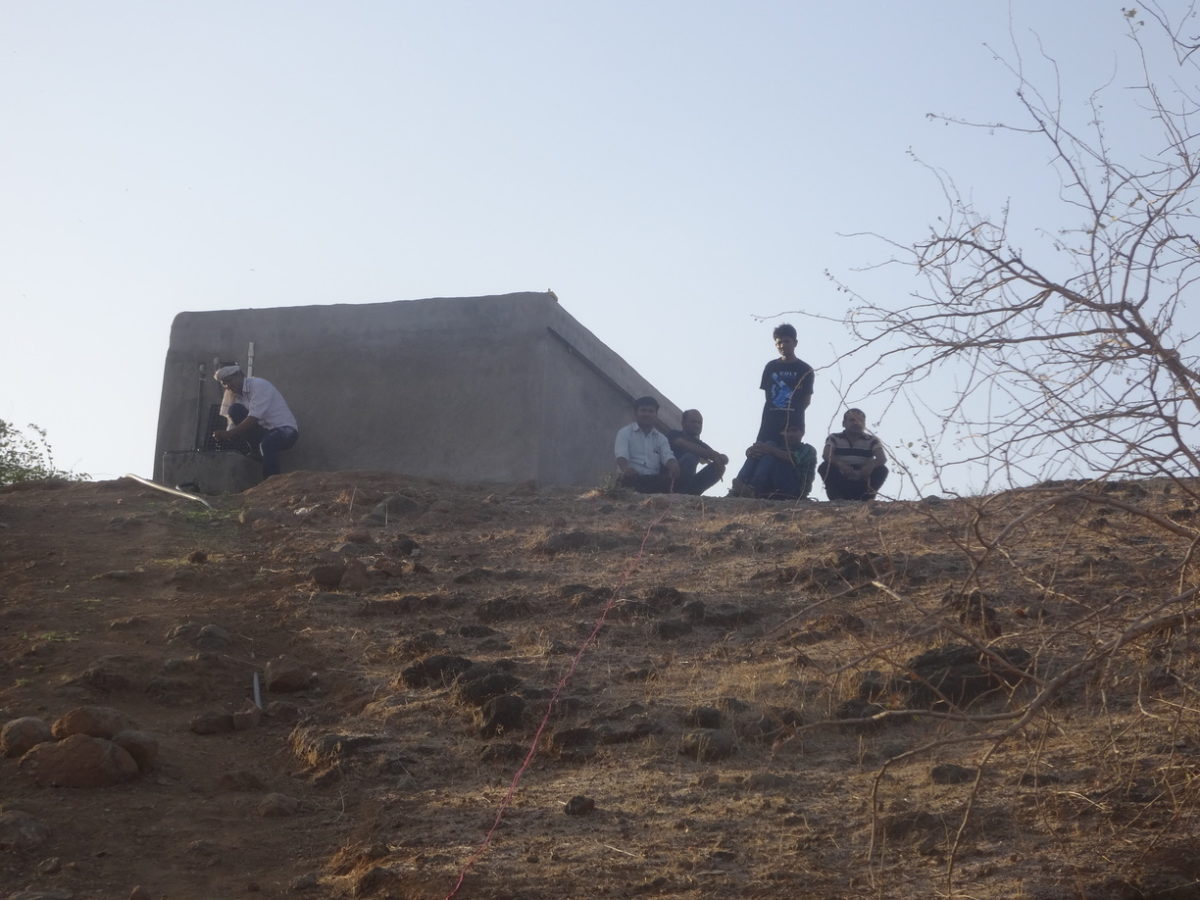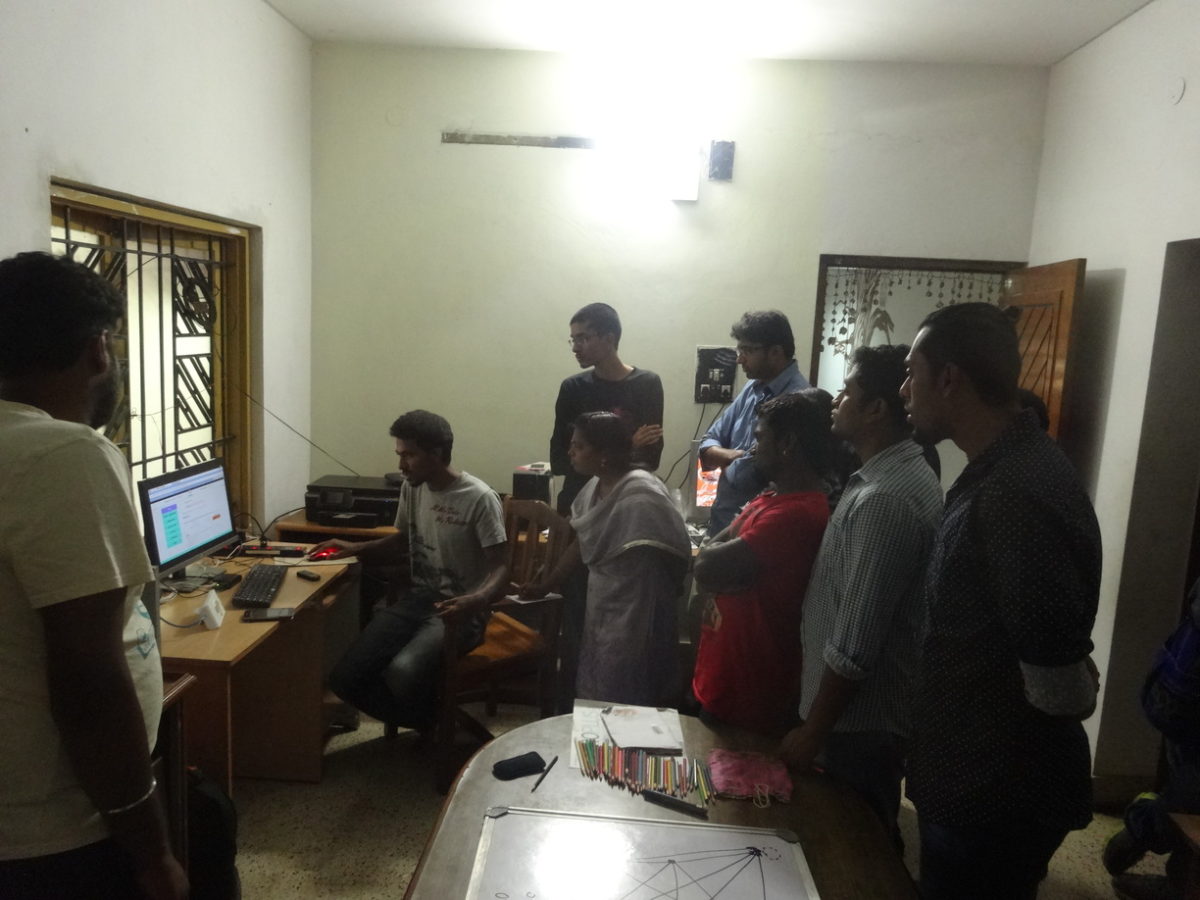 One of the areas we are exploring via our COWMesh project is enabling service specific access based on connectivity in rural and urban low income communities. This is one of the reasons that we found ourselves unable beyond a point to support the demands of the NetNeutrality debate that recently took over Indian cyberspace.
One of the areas we are exploring via our COWMesh project is enabling service specific access based on connectivity in rural and urban low income communities. This is one of the reasons that we found ourselves unable beyond a point to support the demands of the NetNeutrality debate that recently took over Indian cyberspace.
The smartphone and connectivity environment in India, particularly in remote and rural areas is such that even if Net Neutrality was enforced, certain content would overtake others in terms of access. As a result, in our opinion any connectivity channel is worthwhile to utilize with the proviso that a parallel effort is in place with the community to enable information and content sharing across channels.
To this end one experiment we are working on is enabling reliable email access in remote areas where only spotty 2G coverage is available, in a manner that is painless for the user, with the intention of enabling more adoption of email as a communication tool in these areas.
The mechanism we’re working with is fairly simple. The local community sets up a local wireless network that includes some of the points where connectivity is available. At the points where connectivity is available we set up email servers that also act as clients. The server is configured with the email accounts of all email users in the wireless operating community. The server connects to the Internet via a mobile connection (tethered smartphone or dongle) and downloads everyones emails.
Everyone then goes to the local server and logs in to read and respond to their email.
The result is that people do not have to deal with slow loading of heavy interfaces or put up with unwanted ads just to read email. They interact with a fast local server that responds instantly at LAN speeds and later processes the email as and when connectivity is available.
To set this up we used
- Postfix – a Mail Transfer Agent (MTA) to send email through another server using it as a mail relay system
- OfflineIMAP – a tool that allows a user to synchronize online and offline IMAP accounts, to download mail
- Dovecot – to run a local IMAP and POP server that users can connect to, to expose a joint interface to Postfix and OfflineIMAP and also provide synchronization between local and remote authentication
- Roundcube – a webmail client to provide an interface between Dovecot and the end users.
We set these up on a RaspberryPi (3) running Raspbian Jessie. Some of the current assumptions we are working with –
- One linux user on the Pi per email user on the server – need to see if this scales
- User community is cohesive enough and new enough to email to be willing to put their passwords in text files on a common machine. This will need to change if and when the model scales to be able to allow users to alter their passwords without the need for the administrator to know the password. This is also part of the general discussion on roles of systems administrators in community owned and operated networks.
- Increasingly strong 2G signal at at least one point which can be linked to the larger inhabited area via a point to point or mesh based WiFi link (that is not the subject of this article)
Given that the above assumptions are met, here is the configuration we used for the server itself
Postfix
Postfix was installed by running the following –
sudo apt-get install postfix
We are only using postfix to send mail through users external mail accounts so the only thing we need to do is tell postfix where to look for the username and password required to send mail through users accounts. This is done by adding the following lines to the end of /etc/postfix/main.cf
smtp_sender_dependent_authentication = yes
sender_dependent_relayhost_maps = hash:/etc/postfix/sender_relay
smtp_sasl_auth_enable = yes
smtp_sasl_security_options = noanonymous
smtp_sasl_password_maps = hash:/etc/postfix/sasl_passwd
smtp_tls_policy_maps = hash:/etc/postfix/tls_policy
smtp_use_tls = yes
smtp_tls_note_starttls_offer = yes
smtp_tls_CApath = /etc/pki/tls/certs
The first option smtp_sender_dependent_authentication sets up Postfix to use credentials for external email servers based on the sender’s “From” field. This means that whatever mail client is used by the end user should be able to provide the users external email id as the From field while sending email. This will become relevant while configuring Roundcube later.
The sender_dependent_relayhost_maps option tells Postfix to select the external mail server to use to relay the email based on the From field as well.
smtp_sasl_auth_enable tells Postfix to turn on authetication for SMTP.
smtp_sasl_security_options disables anonymous sending of email.
smtp_sasl_password_maps tells Postfix where to look for credentials for different email IDs.
smtp_tls_policy_maps tells Postfix where to check whether or not to use Transport Layer Security for a connection with a particular email server.
smtp_use_tls sets the default policy for SMTP TLS to on.
smtp_tls_CApath tells Postfix where to find certificates for Certifying Authorities.
smtp_tls_note_starttls_offer seems to tell Postfix to note when a TLS offer was made, but I’m not entirely sure what this does (anyone who knows, please add in the comments)
After editing /etc/postfix/main.cf, we next create all the “maps” defined above.
First create /etc/postfix/sender_relay and add the following lines (one for each sender address)
<senderemailaddress> [<smtp server address>]:<portnumber>
e.g. if your email is alice@bob.com and bob.com exposes an SMTP service at smtp.bob.com on port 587. your entry would look like –
alice@bob.com [smtp.bob.com]:587
Next we create the file we referred to above in the smtp_sasl_password_maps option i.e.
/etc/postfix/sasl_passwd
and add the following lines to it –
user1@mail1.com <usernameforuser1>:<passwordforuser1>
user2@mail2.com <usernameforuser2>:<passwordforuser2>
<one for each external email account to be used>
Finally we create the file specified in the smtp_tls_policy_maps i.e. /etc/postfix/tls_policy and add the following line (one for each external mail server –
<server address>:<port number> encrypt
e.g. in the for the server smtp.bob.com above if you wish to enable TLS the line would read –
smtp.bob.com:587 encrypt
After this we create the hashes of these files that Postfix will actually use by running the following commands –
sudo postmap /etc/postfix/sender_relay
sudo postmap /etc/postfix/sasl_passwd
sudo postmap /etc/postfix/tls_policy
OfflineIMAP
We installed OfflineIMAP by running
sudo apt-get install offlineimap
At this point we have to set up each users email account (Note: this should be replaced by a web based admin package, possibly vimbadmin or postfixadmin).
In each users home directory, edit the file .offlineimaprc and add one local and one remote repository as below for each email address that the user wants to access mail from.
[general]
accounts = GMail, OtherGMail
[Account GMail]
localrepository = GMailLocal
remoterepository = GMailRemote
autorefresh = 2
[Repository GMailLocal]
type = Maildir
localfolders = ~/Maildir/Gmail
[Repository GMailRemote]
type = Gmail
realdelete = no
remoteuser = name@gmail.com
remotepass = password1
[Account OtherGMail]
localrepository = OtherGmailLocal
remoterepository = OtherGmailRemote
[Repository OtherGmailLocal]
type = Maildir
localfolders = ~/Maildir/OtherGmail
[Repository OtherGmailRemote]
type = Gmail
realdelete = no
remoteuser = other@gmail.com
remotepass = password2
The options above are described below :
accounts : Lists all the accounts associated with the user, separated by commas
type: Type of account, IMAP/Gmail/other
remoteuser/remotepass: Username and password for the remote repository
realdelete : Tells OfflineIMAP whether to delete messages from the server when they are deleted from the local repo
To test if the configuration is working, run:
offlineimap
Dovecot
Now that we have both sending and receiving configured, we will configure Dovecot to manage access to them by a webmail client as well as authentication
To configure Dovecot first we enable the appropriate protocols by editing /etc/dovecot/dovecot.conf and setting the protocol option
protocols = imap pop3 lmtp
Next we edit /etc/dovecot/conf.d/10-auth.conf to tell Dovecot how to authenticate users. To do this ensure that the line #!include auth-system.conf.ext is uncommented.
Finally we tell Dovecot where to find email for each user by setting the mail_location option in /etc/dovecot/conf.d/10-mail.conf
Configure the appropriate inbox by setting the namespace (this is relevant for multiple addresses and needs further explanation)
mail_location = maildir:~/Maildir/:INBOX=~/Maildir/Gmail/INBOX:LAYOUT=fs
namespace inbox {
separator = /
location =maildir:~/Maildir/Gmail/:INBOX=~/Maildir/Gmail/INBOX:LAYOUT=fs
inbox = yes
list = yes
subscriptions = yes
}
Roundcube
Lastly we need an interface or what is known as a Mail User Agent or MUA to act as a client to Dovecot and allow users to access their email.
To do this we used Roundcube, a webmail client that is also installed on the server. Of course, individual users are free to use other clients as they wish, but the Roundcube interface provides a web based one.
To install Roundcube we ran –
sudo apt-get install roundcube
To configure edit /etc/roundcube/main.inc.php and set the following options
// The mail host chosen to perform the log-in.
$rcmail_config['default_host'] = 'localhost';
// TCP port used for IMAP connections
$rcmail_config['default_port'] = 143;
// IMAP AUTH type (DIGEST-MD5, CRAM-MD5, LOGIN, PLAIN or null to use
// best server supported one)
$rcmail_config['imap_auth_type'] = null;
// If you know your imap's folder delimiter, you can specify it here.
// Otherwise it will be determined automatically
$rcmail_config['imap_delimiter'] = null;
// SMTP server host (for sending mails)
$rcmail_config['smtp_server'] = 'localhost';
// SMTP port (default is 25; use 587 for STARTTLS or 465 for the
// deprecated SSL over SMTP (aka SMTPS))
$rcmail_config['smtp_port'] = 25;
// SMTP AUTH type (DIGEST-MD5, CRAM-MD5, LOGIN, PLAIN or empty to use
// best server supported one)
$rcmail_config['smtp_auth_type'] = '';
Having set these, we restart all services and once they are back up, users can log in and access their email for both sending and receiving by going to
http:<serverip>/roundcube
and logging in as the linux user they have been assigned. After logging into Roundcube, each user will have to add one identity each for each of the mail addresses that they wish to send email from by going to the Identies section under settings and filling in the form.

References – https://technosorcery.net/blog/2010/11/21/offline-email-with-gmail-mutt-postfix-and-offlineimap/
 The first time I visited the Ranikajal Jeevanshala, it was almost peak summer and the hills were baked a reddish brown from the merciless sun. Returning in the middle of the monsoon, I found the very same hills covered in a fine carpet of varying shades of green. Madhya Pradesh is an excellent place to watch nature at work across seasons. The change in colors is very stark, as stark if not starker than the fall colors of the north eastern parts of the United States.
The first time I visited the Ranikajal Jeevanshala, it was almost peak summer and the hills were baked a reddish brown from the merciless sun. Returning in the middle of the monsoon, I found the very same hills covered in a fine carpet of varying shades of green. Madhya Pradesh is an excellent place to watch nature at work across seasons. The change in colors is very stark, as stark if not starker than the fall colors of the north eastern parts of the United States. As a result, the local population get precious few nutrients and those usually from animal sources such as reared goats, hardy animals that can increase muscle weight even on a diet of scrub grass, and fish.
As a result, the local population get precious few nutrients and those usually from animal sources such as reared goats, hardy animals that can increase muscle weight even on a diet of scrub grass, and fish.

 The Internet is fast establishing itself as the central nervous system of a newly evolving entity, i.e. connected humanity. For the first time in the history of our planet, a species has built a mechanism that allows members displaced over great distances to communicate instantly, using electricity as the medium. This is no smaller feat than the evolution of the central nervous system in life forms on this planet, which is the basis of identity and self awareness.
The Internet is fast establishing itself as the central nervous system of a newly evolving entity, i.e. connected humanity. For the first time in the history of our planet, a species has built a mechanism that allows members displaced over great distances to communicate instantly, using electricity as the medium. This is no smaller feat than the evolution of the central nervous system in life forms on this planet, which is the basis of identity and self awareness. find it worthwhile to buy, own and operate a network of their own. We explored many groups, ranging from urban low income housing communities in Bangalore, to elite IIT-JEE training facilities in rural Maharashtra to members of both the tourism industry and the development community in Uttarakhand, but we were unable to establish a usecase for any of the communities that warranted expense and effort by the community themselves. It seemed that those disenfranchised by the telecommunications industry had given up hope.
find it worthwhile to buy, own and operate a network of their own. We explored many groups, ranging from urban low income housing communities in Bangalore, to elite IIT-JEE training facilities in rural Maharashtra to members of both the tourism industry and the development community in Uttarakhand, but we were unable to establish a usecase for any of the communities that warranted expense and effort by the community themselves. It seemed that those disenfranchised by the telecommunications industry had given up hope. Finally in October of 2015, we had a communication from Indore, from Shri
Finally in October of 2015, we had a communication from Indore, from Shri  irajpur.
irajpur.